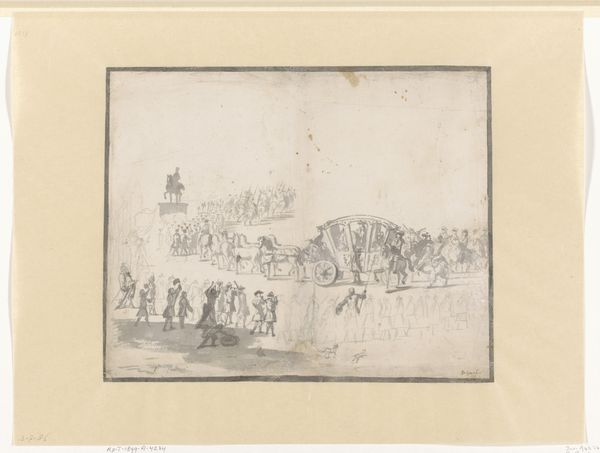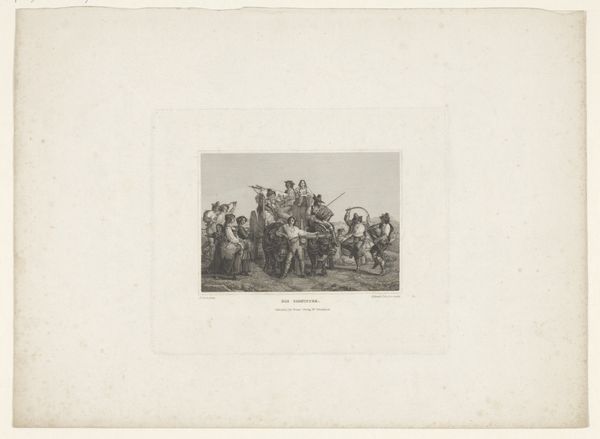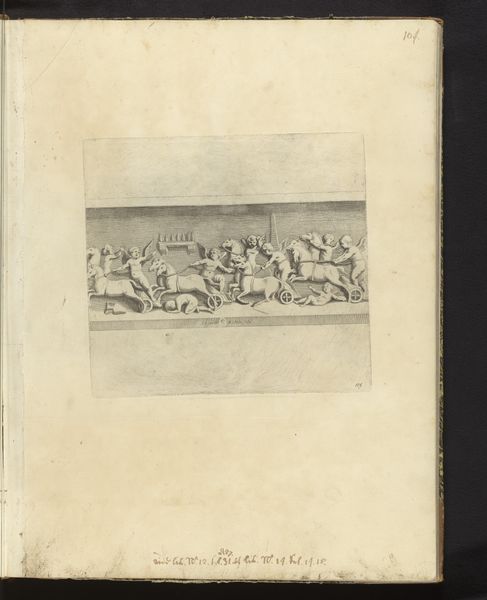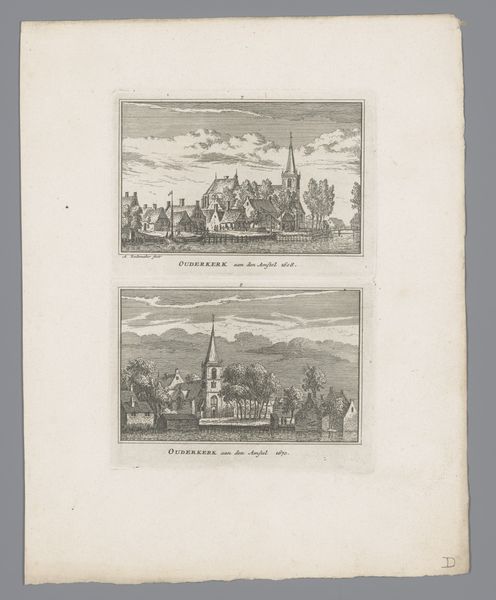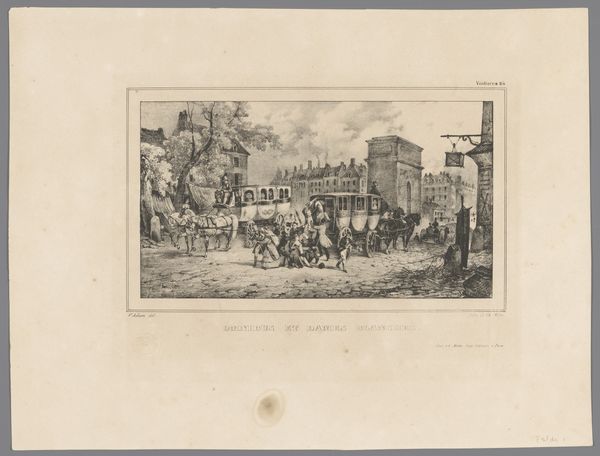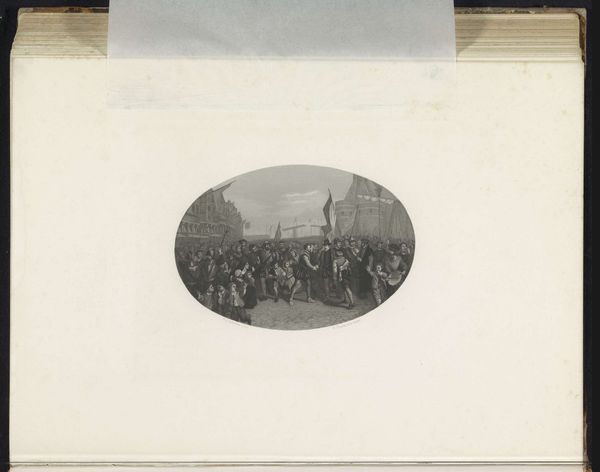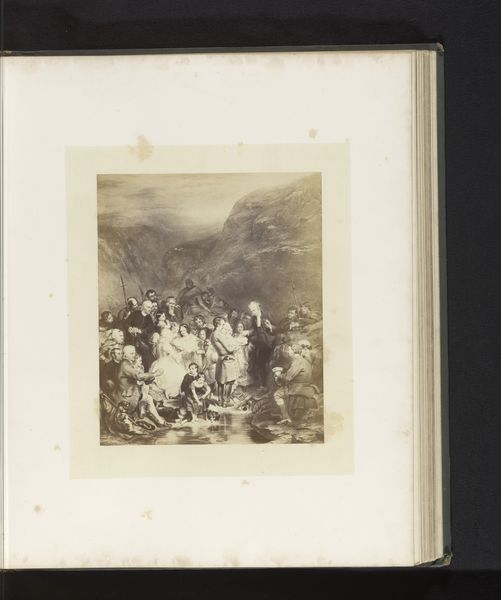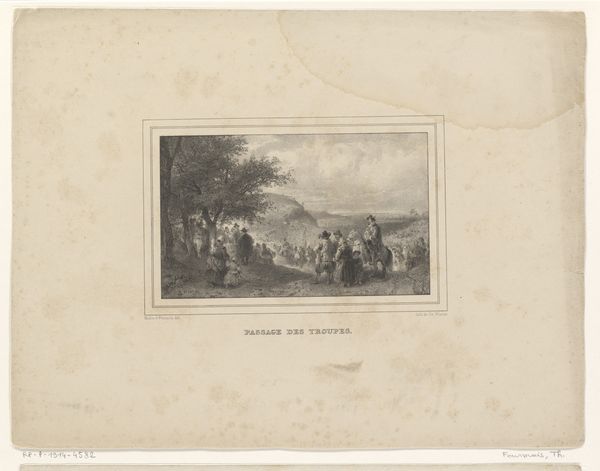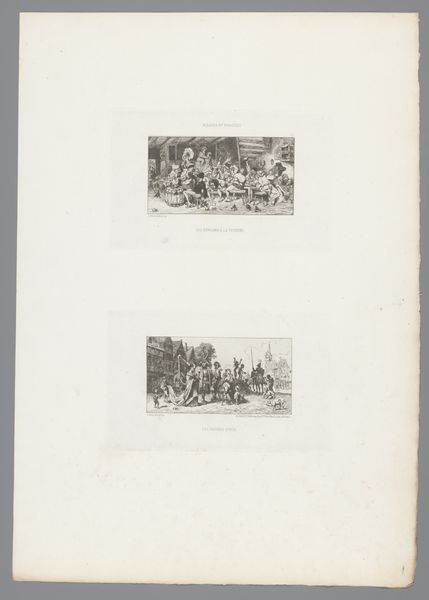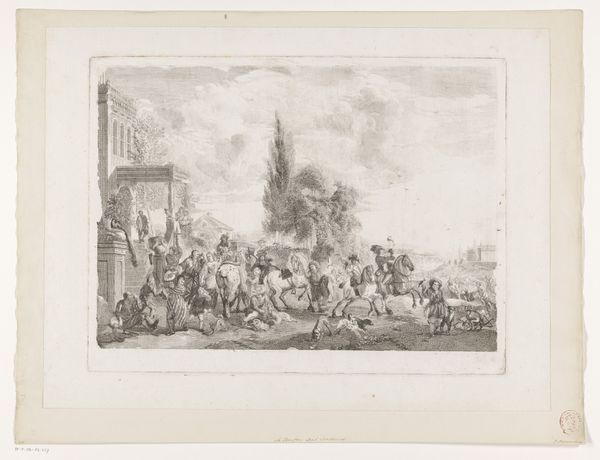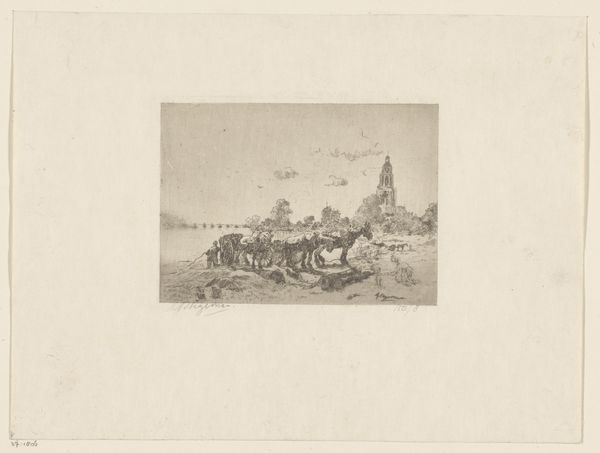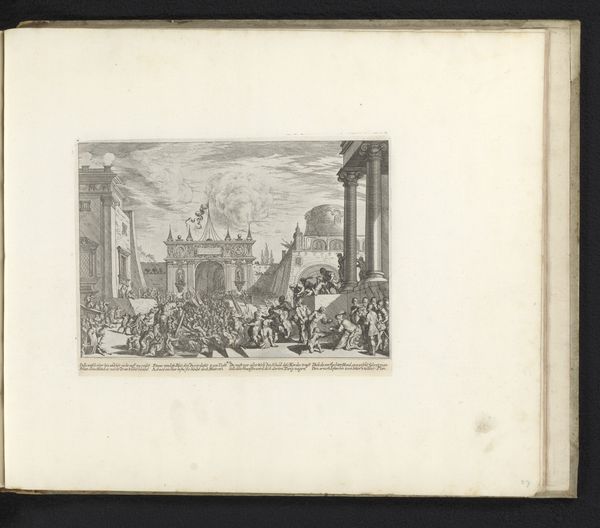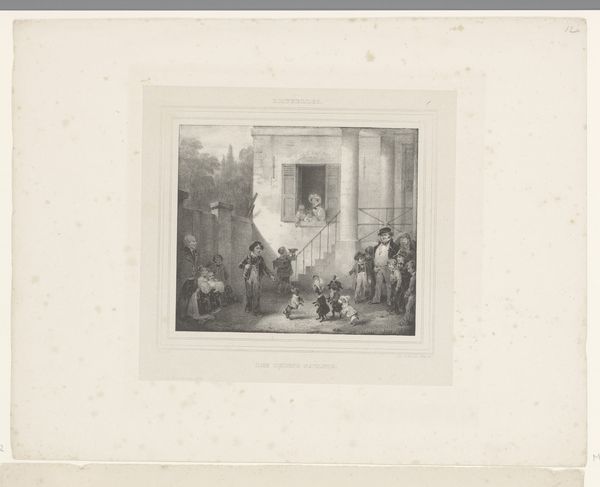
Christus wordt van het paleis van Pilatus naar Golgotha begeleid 1670 - 1682
0:00
0:00
print, engraving
#
baroque
# print
#
figuration
#
line
#
history-painting
#
engraving
#
realism
Dimensions: height 151 mm, width 216 mm
Copyright: Rijks Museum: Open Domain
Curator: Looking at this print, "Christus wordt van het paleis van Pilatus naar Golgotha begeleid," made between 1670 and 1682 by Melchior Küsel and currently residing at the Rijksmuseum, one immediately gets a sense of the drama inherent in the subject. Editor: It is quite stark, wouldn’t you say? The high contrast accentuates the tension and conveys a sense of somber, quiet urgency. The way Küsel has employed a baroque sensibility on the scale of an engraving gives it an almost operatic feel. Curator: Absolutely. Considering this piece through the lens of history, engravings like these were critical for disseminating biblical stories throughout society, especially among those who couldn't read. This was image as propaganda, shaping public perception. Think about the context, the Protestant Reformation was still a fresh memory. Visual depictions of Christ's Passion took on increased weight in religious and political discourse. Editor: I agree. I'm fascinated by how the artist chose to employ line work to evoke light and shadow. Note the incredibly dense network of lines to define depth and volume, particularly within the crowd itself and the shadows cast around them. Observe how effective this method is in rendering emotions on the characters' faces and the general ambiance of foreboding. It makes for such complex textural interest, drawing our eyes into a world rendered entirely through strategic use of lines. Curator: The formal realism he was going for really punches up the emotional resonance too. It pulls the viewer into the historical reality as he perceived it. Küsel is tapping into pre-existing notions of religious art as much as challenging the viewer to witness what he envisions in his time. Editor: And despite the gravity of the subject matter, notice the classical composition and architecture around it. It elevates a narrative to a level of high tragedy with a careful ordering of shapes. This isn't just visual storytelling; it's an appeal to ideals of form as a window into greater moral order and narrative integrity. Curator: Seeing "Christus wordt van het paleis van Pilatus naar Golgotha begeleid" in this way sheds light on how art shapes cultural memory. Editor: I have to say I was not prepared for how much of an emotional punch this diminutive engraving would pack. There is beauty, sorrow and dread etched into every line.
Comments
No comments
Be the first to comment and join the conversation on the ultimate creative platform.
